Is it possible to become a day trader in 7 steps? Absolutely. But you can’t just dive right in and expect to thrive immediately.
It takes time to understand how the market works, find your strategy, and find your day trader stride.
If you want to become a successful day trader, you need to start with the right mindset. You need to dedicate time, discipline, and effort to your trading, starting with your trading education. Ready to get started the smart way? You’re in the right place.
This is your seven-step guide on how to become a day trader. Let’s get to it!
Table of Contents
- 1 What Is Day Trading?
- 2 Life of a Day Trader
- 3 Casual vs. Part-Time vs. Full Time Day Traders
- 4 What Is a Day Trader’s Salary?
- 5 Examples of Successful Day Traders
- 6 How to Become a Day Trader in 7 Steps
- 7 Day Trading Account Requirements
- 8 Key Tips on How I Became a Successful Day Trader
- 9 Join My Trading Challenge
- 10 How Long Does it Take to Become a Day Trader?
- 11 How to Become a Day Trader: The Bottom Line
What Is Day Trading?
Day trading is buying and selling a security on the same trading day. There are tons of different markets for traders — from stocks to forex and beyond.
For example, let’s say you buy shares in Company X, expecting the price to rise. Then, you sell your shares the same day. If you plan the trade well, you end up with a profit.
Day trading is different from investing and swing trading.
I day trade penny stocks. Learn more about my approach to low-priced stocks here.
Benefits of Day Trading
You can trade from virtually anywhere with a laptop, trading software, a broker, and solid Wi-Fi. Want to trade sitting by the pool in Bali? It’s awesome.
But to get there, you gotta do your homework. You can’t cheat success in the stock market.
There are other benefits, too. Trading isn’t a 9-to-5 job.
You’re your own boss. And you can grow a small account. A lot of my top students started small. Check out where some of them are now.
Life of a Day Trader
Do day traders only work a few hours a day? That’s misleading. You may only trade for a few hours a day, but you have to factor in time for studying and research.
When I was learning, I put in hours and hours every day. I skipped classes in high school and college to research and trade. I call it the hustle and the grind.
My point? Trading is a marathon, not a sprint.
Yes, I have several millionaire students, but they put in the time.* They studied their butts off. And they’re dedicated to continuing to learn.
(*Please note: My results, along with the results of my top students are far from typical. Individual results will vary. Most traders lose money. My top students and I have the benefit of many years of hard work and dedication. Trading is inherently risky. Do your due diligence and never risk more than you can afford to lose.)
Casual vs. Part-Time vs. Full Time Day Traders
There are many approaches to trading. You can be a casual day trader, a part-time day trader, or a full-time day trader. I don’t recommend the last option until you have enough experience and consistency.
A casual day trader tends to buy stocks randomly. Maybe they buy and sell stocks spiking big on news. Casual day traders may take weeks or months between trades.
Part-time day traders trade once or a few times per week. They may only trade in the mornings or afternoons.
Full-time traders watch and trade the markets full time. It takes knowledge and experience.
You have to put in the time and get a trading education first. You should also have enough money to pay your bills while you’re trading and growing your account.
What Is a Day Trader’s Salary?
I get this question a lot. You have to understand that day traders don’t earn a monthly or annual salary.
You might not make any money. You might end up losing money some days. There are no guarantees in the market. Again, it comes down to how hard you’re willing to work. It can take years.
You have to prepare — with watchlists and trading plans. (Sign up for my FREE weekly watchlist here.)
Examples of Successful Day Traders
My top students come from my Trading Challenge. They have access to the most resources.
Tim Grittani, arguably the greatest penny stock trader ever, didn’t make money for his first nine months. Now he’s made over $12 million.* Micheal Goode and Mark Croock are two of my other millionaire students.*
I have too many top students to list here, but some of my successful six-figure students are Jack Kellogg, Mike “Huddie” Hudson, and Kyle Williams.
They’ve all worked HARD to find success and become self-sufficient traders. They also give back to the community by helping newbies in my chat rooms and with webinars.
They stay humble. That inspires me and makes me proud.
How to Become a Day Trader in 7 Steps
Wanna know how to become a day trader? Here are seven key steps you need to understand.
1. Trading Strategy
First, you need a trading strategy. Otherwise, you’re buying and selling random stocks … and ending up with random results.
There are lots of strategies for trading. You have to find one that works for you and has a good risk/reward ratio.
Which leads me to…
2. Risk Management
It’s smart to trade small when you lack trading experience. And it’s critical to cut losses fast.
Some of my biggest losses — back in 2003 and 2004 — happened when my ego got the best of me. I threw my risk management rules out the window. I tried to force trades. My mindset was warped, and I broke all my own rules. These mistakes nearly took me out of the game.
But I learned from them. Now cutting losses quickly is my #1 rule. Protect your account.
3. Technical Analysis
I want stocks to prove themselves before I take a trade. I teach my students the same. So I research the company. I search for news on it and check its charts.
Technical analysis starts with charts. Here’s a quick infographic on how to read a stock chart.
4. Stock Market Patterns
To become a day trader, you also need to learn to recognize patterns. Chart patterns repeat. You have to learn how to spot and trade them with a strategy that works for you.
You won’t win every time. That’s OK. It’s a question of preparation. Start with these seven chart patterns.
5. Day Trading Software
Day traders use software or trading platforms to chart and trade. There are a lot of choices when it comes to trading software.
When it comes to day trading penny stocks, I have one top choice…
StocksToTrade
I’ve used a lot of trading software and sites over 20 years of trading. And none were designed for the penny stocks I like to trade.
So I was inspired to build a better platform. With the StocksToTrade team, I think we’ve built the best trading platform out there. You can try it for yourself with a 14-day trial for $7.
The new Breaking News Chat feature is a game-changer. Two former Wall Street pros watch for news that can move stocks. Members get alerts on the most actionable news. This tool has changed trading for me in 2020. My profits are insane this year.* That’s partly due to the pandemic volatility and this incredible tool.
6. Test Strategies Before Risking Real Money
One of the great things about StocksToTrade, and some other broker platforms, is that it includes a paper trading option.
Paper trading is trading with virtual cash without risking your own money. It’s a great way for new traders to test strategies and practice entering and exiting trades.
I recommend new traders start with paper trading. But be aware that you won’t have the same emotions paper trading as you will with real money. And treat your virtual account the same way you plan to with your real account.
7. Choose the Best Online Broker for Day Trading
Different brokers are good for different strategies. There’s no perfect broker, but some are better than others…
Be wary of offshore brokers. Offshore brokers are not FDIC (Federal Deposit Insurance Corporation) insured. So if something goes terribly wrong, you aren’t insured.
Do your research to pick the right broker. These are the brokers I use.
Order Execution Time Is Key
Some brokers charge little or no commissions — but beware. You can get screwed by bad order execution.
This is one of the reasons I stick with the bigger brokers.
You want a well-known broker that has decent execution and does the job you need it to do. Avoid cheap day trading apps. And, of course, invest in your education.
E-Trade or Ameritrade?
Which trader is better for you? That depends on your needs. As you learn how to become a day trader, you’ll have to make some decisions. Do your homework.
A lot of new traders are coming into the market hoping to become a day trader with $100 using Robinhood. I don’t recommend using apps and platforms with limited services and charts.
To reiterate: Look for a company with good order execution time and one that does everything you need it to do. That may mean having accounts with two brokers. It’s what works best for you.
Day Trading Account Requirements
There are some requirements you need to consider if you’re going to be a day trader. Thankfully, there are a couple of regulatory bodies with everyone’s best interests in mind.
There’s the Financial Industry Regulatory Authority (FINRA) and the Securities and Exchange Commission (SEC). FINRA is a not-for-profit self-regulatory body for the financial industry. The SEC is a government body created to protect individual investors.
SEC Regulation and the Pattern Day Trader Rule
The pattern day trader (PDT) rule defines a day trader as someone who makes more than four trades within a five-day trading period. The rule requires a maintained account balance of at least $25,000. Some brokers have requirements that exceed this industry standard.
The SEC supports the PDT rule on your behalf and FINRA supports the rule on the behalf of the industry. There was a time I didn’t like this rule. But since I’ve been teaching for the last decade, I’ve come to appreciate it.
It keeps inexperienced traders from getting into addictive trading behavior. It’s there for your protection.
You can still trade with a smaller account — you just can’t trade as often. That’s good. It forces you to do more research and be more careful about every trade. It can help you develop better habits and self-discipline.
Key Tips on How I Became a Successful Day Trader
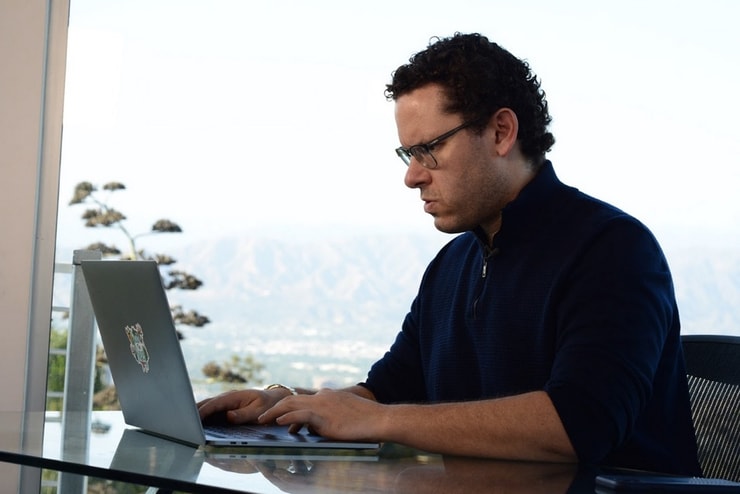
What do successful day traders do? Let’s put it all together. And before you make a single trade, you have A LOT of studying to do. Start with “The Complete Penny Stock Course” by my student Jamil. It’s a thorough overview of my key trading lessons.
#1) Cut Losses Fast
When I first started trading, I didn’t have enough money in my account to let losses run. So I didn’t know how important it is. I had no choice but to cut my losses fast.
Until I got cocky…
My losses from 2003 and 2004 I mentioned earlier? They happened because I tried to force trades. I ignored my own rules and let my ego get in the way. Impatience got the better of me. I had a three-month run where I lost over $100,000 each month. All because I went against my own rule to cut losses fast.
Learn this now, before you even start: Cut losses quickly.
#2) Fine-Tune With Small Accounts
Since I started teaching, every year I take one of my accounts and bring the balance down to $12,000. I do this for a few reasons: It forces me to think like a beginning trader in terms of the PDT rule. And it forces me to make smaller trades and be more careful.
It’s how I teach my students the process of growing a small account.
I force myself to play small to be a better teacher and trader. My trading is more conservative and I keep my emotions out of my trades. I recommend you start with a small account once you’re ready. Then, fine-tune your strategy and discipline.
#3) Avoid Leverage
Don’t use leverage. Ever. I hope you heed this advice.
There may be times when you’ll use a margin account. Specifically for short selling. Using a margin account for short selling doesn’t have to involve leverage. You can learn how by signing up for Pennystocking Silver and watching every lesson.
When you trade with leverage, you can take on exponential risk. It’s not worth it. Learn more about the risks of stock trading leverage here.
#4) Start Small
If you keep your trades — and your losses — small, you can stay in the game longer. That gives you the chance to learn and experience more in the markets. It prevents you from blowing up your account before you find consistency.
Going too big too soon can result in losses too big to recover from.
Don’t put your future and account at risk. Play it safe. Trade with a small position size at first. Once you’re consistent with a strategy you can size up slowly. Then it’s rinse and repeat.
#5) Never Stop Learning
I can’t repeat this enough: Never stop learning.
Keep studying. Learn from your winning trades and — maybe more importantly — from your losing trades.
Day trading penny stocks is not a way to get rich quick. Beware of so-called gurus out there who tell you otherwise. Or that once you know a play you’ve got it for life. That’s BS.
You have to keep learning. Did you know that the word guru means to bring from darkness into light? I don’t like to call myself a guru. But I do want to bring you from lack of knowledge into the light of knowledge. Never. Stop. Learning.
Join My Trading Challenge
There’s a ton of crap on the internet. There are over five million hits for ‘how to become a day trader with $100.’
You can spend hours lost on ‘how to become a day trader’ threads. You’ll find so much information, it’s almost impossible to decipher real from fake.
I want students in my Trading Challenge to avoid the BIG mistakes I made along the way.
Want to join a community of incredible traders and become a self-sufficient trader? Apply to the Trading Challenge today. I look forward to seeing you there.
How Long Does it Take to Become a Day Trader?
Joining my Trading Challenge can increase your learning curve for the market and the patterns and strategy I trade.
How quickly will you put it all together? It comes down to your dedication and the time you put in.
How much time can you dedicate per day to studying and watching markets? How bad do you want it? My top students got it when they got serious and treated it like a business and career.
The sooner you put in the time and effort to learn, the better off you’ll be with the right mindset.
How to Become a Day Trader: The Bottom Line
Now you’re more informed. Read this post again and bookmark it.
Also, check out the links I share in this post to get more information on specific terms, concepts, and topics. Believe it or not, this blog isn’t about me — it’s about you and your future.
The life of a day trader can be great, but you must start with your education. Learn to manage your risk, master the patterns, and set yourself up with some rules.
Have you started day trading? Are you ready to start? What’s holding you back? Leave a comment below.
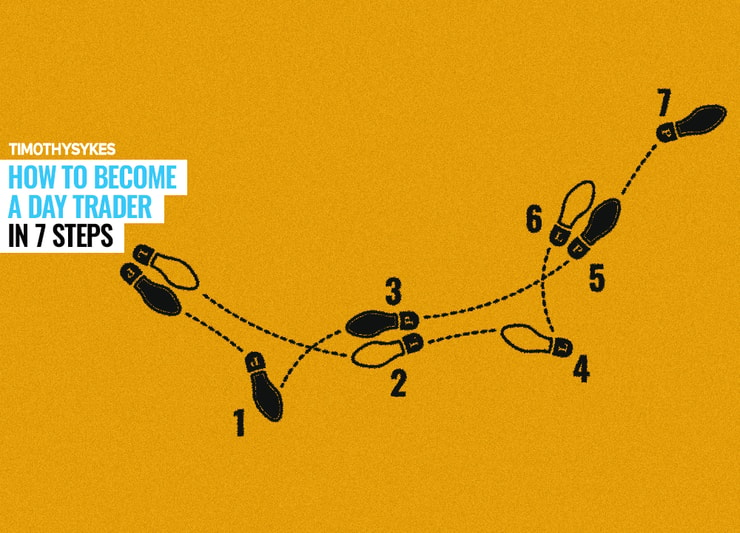


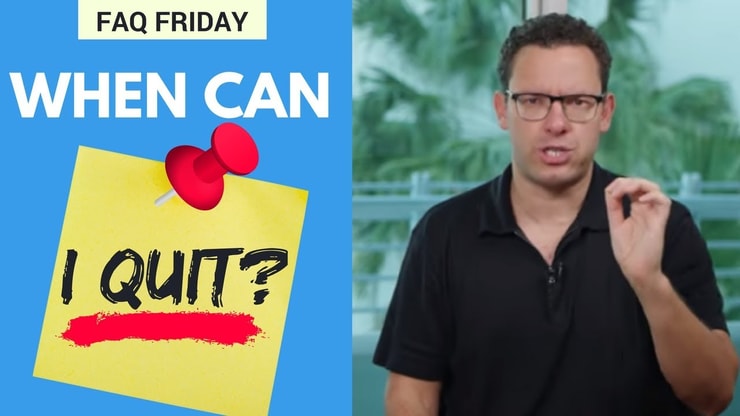

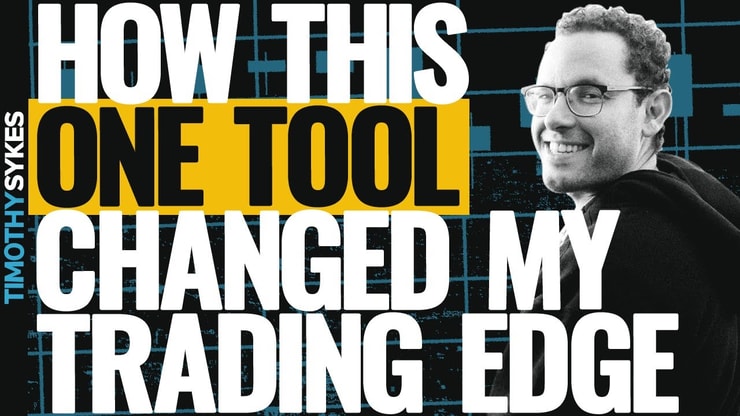


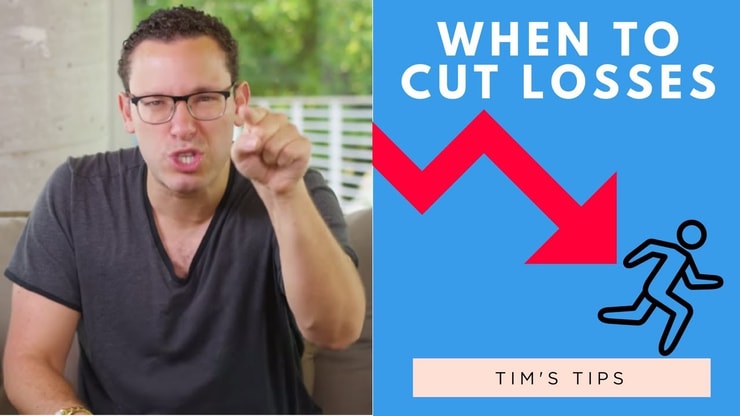



Leave a reply